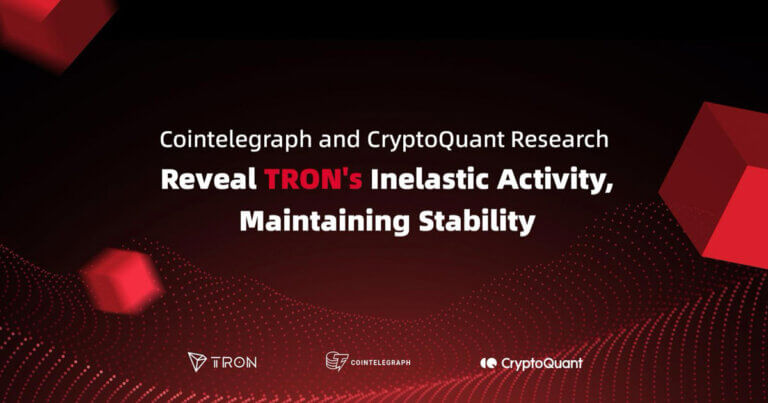Cointelegraph’s research provides an in-depth analysis of the TRON ecosystem and key features of the blockchain. The report reveals that, unlike other blockchains driven by incentive programs and speculative trends, TRON’s network activity is anchored by a robust and stable demand, creating a reliable source of protocol revenues. The research also highlights that the demand for USDT and other token transfers on TRON is remarkably inelastic, maintaining stability regardless of market sentiment.
Key Highlights:
- Strong growth in active addresses is further evidence of organic adoption. TRON exceeds all of its direct competitors with over 2M daily active wallet addresses.
- According to data from DefiLlama, TRON has replaced the BNB Chain as the L1 with the second-highest TVL.
- As of June 2024, TRON is the second-largest blockchain in terms of stablecoin transfer activity.
- A 15% increase in market cap was noted in Q1, alongside a record revenue of $128.1 million in the first quarter, ranking it among the top revenue-generating blockchain networks.
Read the full research report from Cointelegraph here.
CryptoQuant Research
CryptoQuant’s research report offers an in-depth analysis of the TRON network, examining its fast transaction speeds and the TRC-20 USDT stablecoin activity. On-chain data reveals that most holders on TRON are classified as retail or small holders who use TRC-20 USDT for everyday transactions.
Key Analysis:
- TRON’s key advantages are its high scalability and transaction speed. The network is capable of processing up to 2,000 transactions per second (TPS), significantly higher than Ethereum’s 119 TPS (excluding Layer-2).
- TRON achieves high transaction speeds through its efficient DPoS mechanism and integration with BitTorrent for distributed storage. Contrary to other blockchains, it does not rely heavily on external scaling solutions, making TRON suitable for various types of transactions, even large-scale applications and high-traffic environments.
- Most holders of USDT on TRON could be classified as “retail” or small holders. There are over 52.6M million small holders who were responsible for 28% of USDT transactions on the TRON network as of July 2024.
CryptoQuant’s report highlights that TRON excels in handling both large and small transactions. However, it is particularly favored by retail users for fast, frequent, low-value transactions such as remittances, micropayments, and peer-to-peer transfers. The strong participation of retail users highlights TRON’s practicality and cost-effectiveness. With a steady increase in transaction volume and network activity, TRON is enhancing liquidity and overall network health.
Read the full report from CryptoQuant here.
The combined insights from Cointelegraph and CryptoQuant highlight TRON’s robust network activity and the stable demand for TRC-20 USDT. Together, these reports illustrate TRON’s leading role in advancing the practical use of digital assets, enhancing liquidity, and promoting the overall health of the blockchain ecosystem.
